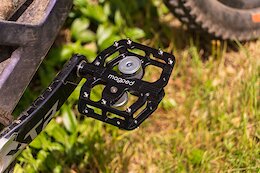As a security consultant, not a functional expert, I’m outlining the key differences between SAP S/4HANA and SAP ECC. This overview highlights important changes that are useful when handling security-related tasks.
1st is Business Partners.
BP/Business Partners is not a new concept, it was there in ECC system as well, I remember using it for a particular CRM implementation, where we had multiple relationships to be defined for external partners. But most of the companies still relied on maintaining vendor and customer master data separately. Now with S/4 all the master data is maintained in BP. If you ever do the brownfield implementation, you will see XK01 etc (vendor and customer master data related) tcodes are obsolete and SU25 will suggest to replace it with tcode BP.
This goes with the fact that an external entity can have multiple relations with a business. For instance, Microsoft may act as a vendor for SAP by providing Office 365 solutions while also being a customer using SAP’s ERP system. In Business Partner (BP), these two roles are defined separately, but the core master data for Microsoft remains centralized, ensuring consistency across different relationships.
2nd is Lesser no of Tables
SAP S/4HANA has a reduced number of tables compared to the ECC system, but this applies specifically to the S/4HANA solution, not the HANA database itself. If an ECC system is connected to a HANA database, it will still retain the larger number of tables from ECC.
For example, FI and CO tables have been consolidated into a single table, ACDOCA (Universal Journal), serving as a single source of truth. Additionally, summary tables have been eliminated due to HANA’s column level in-memory storage, enabling faster analytical processing.
3rd is Universal Journal – ACDOCA (Single source of truth)
In ECC solution, FI (Financial Accounting module) and CO (Controlling/Management Accounting) used to have different tables. With S/4HANA, all accounting related postings are posted in one single table called ACDOCA, also called universal journal. Within the same entry posted to ACDOCA, amount can be split and be associated with different cost/profit centers.
4th is Material ledger
If companies are using S/4HANA for their inventory management, using material Ledger is a must. Material ledger is just like BP, which was there in ECC system, but companies didn’t use it much. The material ledger in S/4HANA supports up to 3 currencies.
5th is Foreign Trade
The foreign trade functionality now cannot be used in FI module. If company implementing S/4HANA is into foreign trade operations, they would need to implement SAP GTS. (Global Trade Services).
6th is Embedded Analytics
SAP S/4HANA comes with Embedded Analytics, allowing companies to access real-time insights without needing a separate BW system—perfect for those who don’t require highly customized reports. Key benefits include:
Cost Saving – Reduced expenses on licenses, infrastructure, and maintenance.Real-Time Data – Instant access to live business information without replication delays.No Data Duplication – Eliminates redundancy by analyzing data directly within S/4HANA.
7th is Embedded GRC
Just like analytics, S/4HANA gives an option to install in embedded mode. Embedded GRC, just like embedded analytics have same pros – lesser cost, no data duplication and real time analysis. I will cover more about embedded GRC and how it differs from standalone GRC installation in my next blog.
I’ve covered the key points, though not everything. However, this should give security professionals a solid starting point for S/4HANA implementations and interviews
As a security consultant, not a functional expert, I’m outlining the key differences between SAP S/4HANA and SAP ECC. This overview highlights important changes that are useful when handling security-related tasks.1st is Business Partners.BP/Business Partners is not a new concept, it was there in ECC system as well, I remember using it for a particular CRM implementation, where we had multiple relationships to be defined for external partners. But most of the companies still relied on maintaining vendor and customer master data separately. Now with S/4 all the master data is maintained in BP. If you ever do the brownfield implementation, you will see XK01 etc (vendor and customer master data related) tcodes are obsolete and SU25 will suggest to replace it with tcode BP.This goes with the fact that an external entity can have multiple relations with a business. For instance, Microsoft may act as a vendor for SAP by providing Office 365 solutions while also being a customer using SAP’s ERP system. In Business Partner (BP), these two roles are defined separately, but the core master data for Microsoft remains centralized, ensuring consistency across different relationships.2nd is Lesser no of TablesSAP S/4HANA has a reduced number of tables compared to the ECC system, but this applies specifically to the S/4HANA solution, not the HANA database itself. If an ECC system is connected to a HANA database, it will still retain the larger number of tables from ECC.For example, FI and CO tables have been consolidated into a single table, ACDOCA (Universal Journal), serving as a single source of truth. Additionally, summary tables have been eliminated due to HANA’s column level in-memory storage, enabling faster analytical processing.3rd is Universal Journal – ACDOCA (Single source of truth)In ECC solution, FI (Financial Accounting module) and CO (Controlling/Management Accounting) used to have different tables. With S/4HANA, all accounting related postings are posted in one single table called ACDOCA, also called universal journal. Within the same entry posted to ACDOCA, amount can be split and be associated with different cost/profit centers.4th is Material ledgerIf companies are using S/4HANA for their inventory management, using material Ledger is a must. Material ledger is just like BP, which was there in ECC system, but companies didn’t use it much. The material ledger in S/4HANA supports up to 3 currencies.5th is Foreign TradeThe foreign trade functionality now cannot be used in FI module. If company implementing S/4HANA is into foreign trade operations, they would need to implement SAP GTS. (Global Trade Services).6th is Embedded AnalyticsSAP S/4HANA comes with Embedded Analytics, allowing companies to access real-time insights without needing a separate BW system—perfect for those who don’t require highly customized reports. Key benefits include:Cost Saving – Reduced expenses on licenses, infrastructure, and maintenance.Real-Time Data – Instant access to live business information without replication delays.No Data Duplication – Eliminates redundancy by analyzing data directly within S/4HANA.7th is Embedded GRCJust like analytics, S/4HANA gives an option to install in embedded mode. Embedded GRC, just like embedded analytics have same pros – lesser cost, no data duplication and real time analysis. I will cover more about embedded GRC and how it differs from standalone GRC installation in my next blog. I’ve covered the key points, though not everything. However, this should give security professionals a solid starting point for S/4HANA implementations and interviews Read More Technology Blogs by Members articles
#SAP
#SAPTechnologyblog












